Electronics News
Archive : 26 August 2015 год
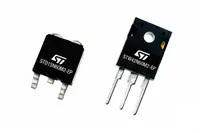 STMicroelectronics (ST) has extended its MDmesh M2 series of N-channel power MOSFETs by introducing devices that are claimed to offer the industry's highest power efficiencies in power supplies for servers, laptops, telecom, and consumer applications. With these devices, designers can create switching power conversion solutions that are lighter and more compact.
STMicroelectronics (ST) has extended its MDmesh M2 series of N-channel power MOSFETs by introducing devices that are claimed to offer the industry's highest power efficiencies in power supplies for servers, laptops, telecom, and consumer applications. With these devices, designers can create switching power conversion solutions that are lighter and more compact.
The 600V MDmesh M2 EP devices combine ST's strip layout with an improved vertical structure and an optimised diffusion process to approach the ideal switch, with low ON-resistance and the lowest available turn-off switching losses. They are tailored for very-high-frequency converters (f> 150 kHz), suiting them for demanding Power Supply Unit applications.
The devices are claimed to offer low switching losses, especially under light-load conditions. In addition to the Qg of down to 16nC exhibited by the MDmesh M2 devices, the M2 EP devices are said to feature up to a 20% reduction in Eoff, thus reducing the turn-off switching losses in hard-switching converters. This Eoff reduction in the low current range is said to boost efficiency under light-load conditions.
The enhanced shape of the turn-off waveforms is said to lead to higher efficiency and lower noise in resonant converters, allowing more energy to be stored and re-used, rather than dissipated as heat, cycle by cycle.
Offered in a range of packages the MDmesh M2 EP family targets power-supply applications that require the highest efficiency levels.
Author
Tom Austin-Morgan
Source: www.newelectronics.co.uk
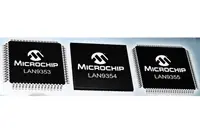 Microchip has announced the addition of the LAN9353, LAN9354 and LAN9355 Three-Port, 10/100 Industrial Ethernet Switches to its portfolio of Ethernet solutions, which includes Ethernet switches, controllers, bridges and PHYs.
Microchip has announced the addition of the LAN9353, LAN9354 and LAN9355 Three-Port, 10/100 Industrial Ethernet Switches to its portfolio of Ethernet solutions, which includes Ethernet switches, controllers, bridges and PHYs.
Featuring the IEEE 1588-2008 Precision Time Protocol (PTP) standard for clock accuracy in the sub-nanosecond range, these integrated Ethernet switches offload both synchronisation and communications processing from the host CPU. Developers can also take advantage of advanced features such as Transparent Clocking, which is said to improve system accuracy. Additional features designed to reduce overall system power consumption include Energy Efficient Ethernet and Wake On LAN.
These switches enable the development of advanced hardware in the Industrial Ethernet market, including automation, motion-control, embedded, automotive, security/surveillance and telecommunications applications.
The LAN9353/4/5 Ethernet switches support multiple industry standards giving designers the flexibility to select from a range of MCUs, SoCs or processors to interface with this new series of switches.
Three Microchip evaluation boards, EVB-LAN9353/4/5 have also been released that demonstrate how to interface with the switches through I/O connections or with MCUs such as the 32-bit PIC32MX family via serial communications.
The Ethernet Switches are available in 64-pin QFN and TQFP-EP for the LAN9353; 56-pin QFN for the LAN9354; and 88-pin QFN and 80-pin TQFP-EP for the LAN9355.
Author
Tom Austin-Morgan
Source: www.newelectronics.co.uk
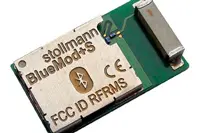 Following an agreement with German company Stollman, Acal BFi will distribute the latter's Bluetooth modules. According to Acal, the German company has specialised in the development of Bluetooth and Bluetooth Low Energy modules for years and notes the modules can be quickly and cost-effectively integrated into a range of products.
Following an agreement with German company Stollman, Acal BFi will distribute the latter's Bluetooth modules. According to Acal, the German company has specialised in the development of Bluetooth and Bluetooth Low Energy modules for years and notes the modules can be quickly and cost-effectively integrated into a range of products.
Lee Austin, European business development director for Acal BFi's communications division, said: "The addition of Stollmann's high quality Bluetooth modules complements Acal BFi's portfolio and further enhances our ability to promote a variety of technical solutions to our customers."
Stollman's Bluetooth Low Energy modules have been developed for use in demanding applications, with the BlueMod+S single-mode module, pictured, said to be suited for use in sensors and other battery-operated applications. The pin compatible BlueMod+SR dual-mode module is available for Bluetooth pairing with NFC handover and compatible with classic Bluetooth.
"Stollmann's Bluetooth modules combine high quality with a small form factor and easy integration," said Florian Herrmann, Stollman's operations director. "We are glad to work with Acal BFi, a reliable and dedicated partner for everything IoT related in Europe."
Author
Graham Pitcher
Source: www.newelectronics.co.uk
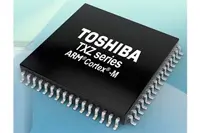 Toshiba Electronics Europe has announced it will enhance its portfolio of ARM Cortex-based microcontrollers (MCUs). The TXZ series of MCUs are said to support low-power consumption and high-speed operation for IoT and M2M ecosystems.
Toshiba Electronics Europe has announced it will enhance its portfolio of ARM Cortex-based microcontrollers (MCUs). The TXZ series of MCUs are said to support low-power consumption and high-speed operation for IoT and M2M ecosystems.
The TXZ series has been designed to meet market needs for low power consumption systems by integrating the ultra-low power design technologies adopted in the TZ series of ApP Lite application processor for IoT solutions into the TX family of MCUs.
Fabricated using an embedded flash memory process based on a 65nm logic process, the TXZ series is claimed to reduce power consumption by 60% compared to Toshiba's current MCU products.
The first product group will be the TMPM3H, part of the TXZ3 series that will be based on ARM Cortex-M3 core. Toshiba says the TMPM3H group will feature products characterised by small packages with pin counts of 32 to 100 pins, flash memory capacities of 32 to 128KB and standard peripheral functions. Toshiba expects the devices to reduce system power consumption, targeting less than 100uA/MHz for the MCUs.
A second product group will be produced, comprising high-speed products based on the ARM Cortex-M4F core and a further, third product group featuring ultra-low power consumption products based on the same core.
Toshiba claims it has also started to develop MCUs with embedded non-volatile memory that adopts single-poly multi-time programmable cells on its 130nm logic process technology. These devices will be designed to help to reduce cost in applications including power management and motor control.
Toshiba aims to launch 180 products by 2017 and a further 120 by 2018.
Author
Tom Austin-Morgan
Source: www.newelectronics.co.uk
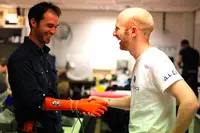 Joel Gibbard, winner of the Young Engineer of the Year Award at last year's British Engineering Excellence Awards, has become the UK winner of the James Dyson Award for his prototype 3D printed hand. Gibbard claims the hand can be made faster and at lower cost than current artificial limbs.
Joel Gibbard, winner of the Young Engineer of the Year Award at last year's British Engineering Excellence Awards, has become the UK winner of the James Dyson Award for his prototype 3D printed hand. Gibbard claims the hand can be made faster and at lower cost than current artificial limbs.
The prosthetic, designed by Gibbard's Open Bionics project, can be produced in 40 hours and is available at a price of £2000, including the cost of fitting. Though his design isn't as advanced as some alternative prosthetics which can cost between £30,000 and £60,000, it is a much more affordable option, especially for children who may have to change their prosthetic multiple times a year to compensate for their growth.
"The problem of current robotic prosthetics is their financial barriers. The only alternative to a robotic prosthetic is a cosmetic hand that is functionless and heavy, or an alienating hook," Gibbard said. "I can 3D print a robotic prosthetic that hand amputees enjoy showing off for a fraction of the price."
Gibbard's prosthetic hand works by detecting muscle movements via sensors stuck to the wearer's skin. A single flex of the muscles opens and closes the fingers, while a double flex forms a pinch grip.
Although the user cannot feel what the fingers are touching, sensors built into the hand can tell when they are in contact with an object and adjust or limit the force that is exerted. This means that the owner can pick up objects as fragile as an egg without breaking them.
"I'm a great believer in finding more efficient ways of doing things. By embracing rapid prototyping techniques, Joel has initiated a step-change in the development of robotic limbs," said James Dyson. "Open Bionics opens doors to a community that might not have previously had access to advanced prosthetics."
Gibbard will now represent the UK in the international awards later this year.
Pic: Joel Gibbard (right) inventor of the award winner prosthetic hand
Author
Tom Austin-Morgan
Source: www.newelectronics.co.uk
 Physicists from the University of Toronto say they have taken a step toward making a logic gate using single photons, something they suggest could be an essential building block of quantum computers.
Physicists from the University of Toronto say they have taken a step toward making a logic gate using single photons, something they suggest could be an essential building block of quantum computers.
While photons are said to have many advantages in quantum computing, the challenge is to get them to interact. "We've seen the effect of a single particle of light on another optical beam," said Aephraim Steinberg, a researcher at the University of Toronto's Centre for Quantum Information and Quantum Computing. "Normally, light beams pass through each other with no effect at all. To build technologies like optical quantum computers, you want your beams to talk to one another. That's never been done before using a single photon."
In their work, the researchers shot one photon at rubidium atoms cooled almost to absolute zero. The photon became 'entangled' with the atoms, which then affected the way in which the rubidium interacted with a separate optical beam. Because the photon changes the atoms' refractive index, there is a small, but measurable, 'phase shift' in the beam.
This process, says the team, could be used as an all optical quantum logic gate, allowing for inputs, information processing and outputs.
"Quantum logic gates are the most obvious application of this advance," said Steinberg. "But being able to see these interactions is the starting page of an entirely new field of optics. Most of what light does is so well understood that you wouldn't think of it as a field of modern research. But two big exceptions are 'what happens when you deal with light one particle at a time?' and 'what happens when there are media like our cold atoms that allow different light beams to interact with each other?'"
Both questions have been studied, he saids, but never together until now.
Author
Graham Pitcher
Source: www.newelectronics.co.uk
 Digi International and Digi-Key Electronics have announced the Digi XBee Wireless Connectivity Kit (XKB2-AT-WWC).Initially available through Digi-Key for 90 days, the platform provides a resource for developers to better understand how XBee RF modules can be used for wireless device connectivity and sensor networking solutions.
Digi International and Digi-Key Electronics have announced the Digi XBee Wireless Connectivity Kit (XKB2-AT-WWC).Initially available through Digi-Key for 90 days, the platform provides a resource for developers to better understand how XBee RF modules can be used for wireless device connectivity and sensor networking solutions.
"This is another step in our relationship with Digi-Key to enable hundreds of thousands of engineers to realise the value that Digi products offer," said Richard Halliday, vice president of channel sales and alliances, Digi International. "Working with Digi-Key provides an efficient way to expose all types of designers to the entire breadth of innovative wireless capabilities Digi International offers."
The technology is said to enable fast time-to-market, design flexibility, low development costs, and excellent range for those seeking to incorporate wireless capabilities into a whole new range of products and solutions.This connectivity kit offers beginners and experienced designers and engineers alike the opportunity to incorporate wireless communications into their designs.
The kit features two XBee Grove Development Boards that incorporate the universal 4 pin connector used by Grove sensors, two XBee RF modules and micro-USB cables. With the kit, developers can gain an understanding of how to incorporate wireless connectivity into their solutions, as well as create prototypes for testing POC.
"By providing this solution, engineers can quickly understand all the value that wireless connectivity can bring to their solution and how easy it is to incorporate," said David Stein, vice president, Global Semiconductors at Digi-Key. "We're excited to continue introducing offerings that showcase the exceptional capabilities of the XBee product line."
Author
Tom Austin-Morgan
Source: www.newelectronics.co.uk

